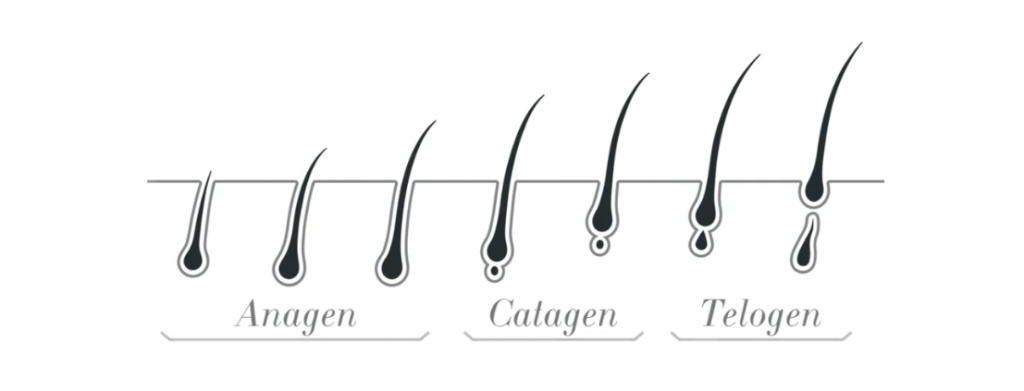Just like every other hair on our body, our lashes go through a growth cycle. There are three phases in the lash growth cycle: Anagen, Catagen, and Telogen. Every singular lash will be on its own cycle – which is why it’s important to be able to recognize what a lash looks like during each stage.

Anagen – The Growth Phase
The Anagen Phase, also known as the Growth Phase, lasts about 30-45 days. About 40% of upper lashes and 15% of bottom lashes are in this phase at any one time. During this phase, your lashes are very small and actively growing. These lashes are commonly called “baby lashes” because of their size and strength. Anagen lashes are attached to the follicle and will not fall out unless they are intentionally pulled out. If a lash is detached from the follicle during this phase, it will cause damage to that follicle. If done so repeatedly, it’s highly possible to hinder the growth of those lashes and permanently ruin the follicle. During the beginning stages of the Anagen Phase, the lashes are too fragile to have extensions applied.
To recognize these lashes, pay attention to their length and density. They will be much shorter than the majority of the lashes and look thin and less dense. If an extension is applied during this phase, it could cause harm or discomfort for the client. It’s also typical for the extension to fall to the side or not fully grasp onto the Anagen lash during application. If an Anagen lash has an extension applied, it will slowly start to droop due to excessive weight on the tip of the lash, and it could break the lash off or completely pull it out of the follicle.
Catagen – The Transition Phase
Following the Growth Phase is the Catagen Phase, also known as the Transition Phase. This phase lasts about 14-21 days. Your lashes will peak in strength and length during this time. Within the 14-21 day cycle, the follicle will begin to shrink, resulting in the lash becoming detached and will no longer be actively growing. If a Catagen lash is pulled out during the end of this phase, it will not cause any damage to the follicle. Although, since the follicle still needs to complete its full cycle through the three phases, it will take time for a new lash to appear.
Catagen lashes are easy to recognize because of their health and length. They are also very dense and flexible. This phase is perfect for extensions to be applied. Due to the strength of a Catagen lash, it can hold the weight of any type of extension.
Telogen – The Resting Phase
Once the lash is fully detached from the hair follicle and is completely stagnant, it will then have entered the Telogen Phase, also known as the Resting Phase. This phase lasts about 90-120 days. Since this lash is no longer attached to the follicle, it isn’t receiving any nutrients. It will lose its flexibility and become more coarse. Since this is the end of the growth cycle, a new lash will begin to grow in its place, and will eventually push out the Telogen lash. The Telogen lash may also fall out on its own. Typically if that happens, it will take about 28-36 days for the fallen lash to be replaced.
The best way to recognize when a lash is in the Telogen phase is when it is more coarse and has little to no flexibility. They will still hold the same strength and length as the Catagen Phase. These lashes are also perfect for lash extensions to be applied to.
Be sure to follow us on Instagram for more educational content! @bellalash
